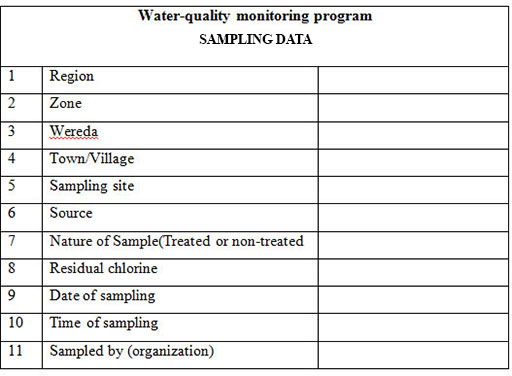12.6 Water sampling
It is important that the water that people drink is safe. Ethiopia has drinking water standards with limits for microbial, physical and chemical parameters, and you learned about these in Study Session 9. The water utilities are responsible for monitoring the quality of drinking water.
To check that drinking water quality is within standards, samples have to be carefully taken for analysis. It is important that representative samples are obtained so that they reflect an accurate assessment of the condition of the source. ‘Representative’ here means that the water sample taken represents as accurately as possible the water supply as a whole.
When water samples are collected for analysis, care should be taken to ensure that there is no external contamination of the samples. Glass bottles, rather than plastic, are best used for sampling. Both bottles and stoppers (caps) must be sterilised (to kill any micro-organisms present) so that microbiological analysis of the water sample is valid. Bottles should be clearly labelled with the place where the sample was taken and the date. A suggested form to accompany the water sample is shown in Figure 12.4. Note that residual chlorine is measured on site.

Details of the sample (time taken, location, etc.) and results of any measurements made should be carefully recorded and filed, so that they can be referred to later if needed.
You will now consider the sampling procedure for two different locations.
12.5 Solving problems found during sanitary inspections
